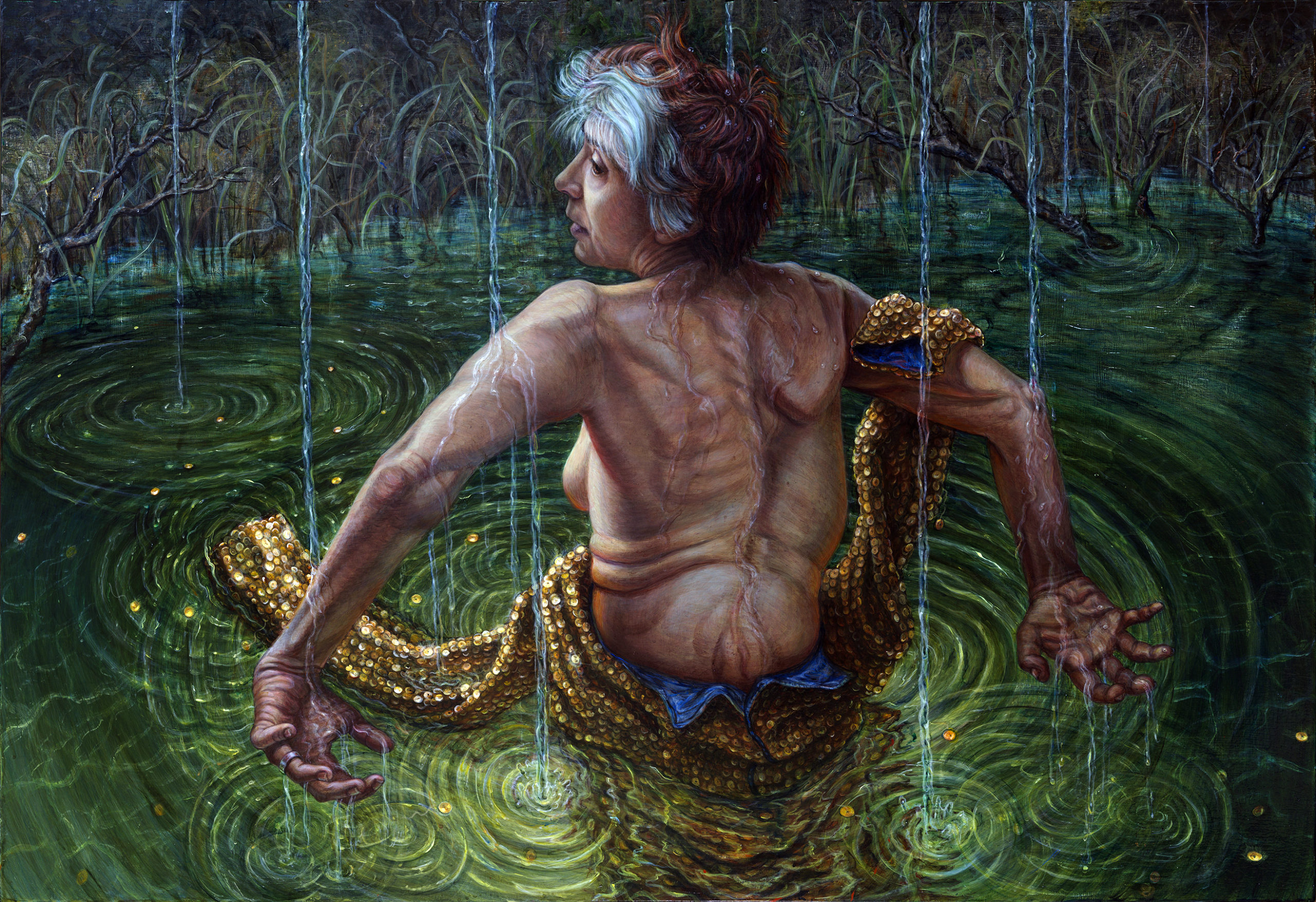The following is the prologue from Riva Lehrer’s memoir Golem Girl, an illustrated memoir of a Jewish artist born with disabilities who searches for freedom and connection in a society afraid of strange bodies.
The Latin roots of “monster” are monere, meaning “to warn,” and monstrum, an omen, or a supernatural being that indicates the will of a god. “Monster” shares its etymological root with “premonition” and “demonstrate.”
My first monster story was Frankenstein.
Though this first Creature was more James Whale than Mary Shelley. When we were little, my brothers and I would abandon the great outdoors and race inside in time for the Saturday monster movie matinee.
Two hours of ecstatic dread. Of delicious nightmares in chiaroscuro black-and-white.
Every few weeks, it would be his turn. I waited for his graceless body, his halting gait and cinder-block shoes. I could recognize the operating room where he was born. I knew he was real, because we were the same—everything that made him a monster made me one, too. We had more in common than scars and shoes. Frankenstein is the story of a disabled child and its parent. It is also the story of a Golem.
Humans have told stories of magically animated creatures for thousands of years. Ancient religions from Babylonia and Sumer, to Mexico, Africa, and China, all assert that gods formed the first human beings out of clay. Enki and Prometheus are but two creators who formed a being and gave it life. These days, we have Victor Frankenstein and his
Creature, but long before them, the Jews had Rabbi Judah Loew ben Bezalel and his Golem.
Golem (goylem in Yiddish) is Hebrew for “shapeless mass” and first appears in Psalm 139 of the Hebrew Bible, in which Adam is referred to as a golmi. Adam is brought to life by the breath—the word—of God, transformed from inert matter into vibrant life: the first Golem. The difference is that Adam becomes fully human, while Golems of legend never do.
*
Iterations of this legend date from as far back as the eleventh century, but the most famous version dates from sixteenth-century Prague. The Golem of Prague tells the story of Rabbi Judah Loew ben Bezalel (an actual historical figure, known as the Maharal) and his creation of a living being made of clay. Golems wend through our stories, from Pygmalion’s statue to the Bride of Frankenstein to Mr. Data and Seven of Nine; from the Cylons to C-3PO, R2-D2, and Chucky the doll. And, of course, to Gollum himself.
While these are not all Golems, exactly, every creature is made of inanimate material that is shaped and awakened by the will of a master (and nearly every story is of a master—not a mater—a male who attempts to attain the generative power of the female body).
Golems are built in order to serve a specific purpose. Adam, it is said, was built for the glory of God. The Golem of Prague was built to save the Jews from a pogrom. Frankenstein’s monster was built for the glory of his maker, and for the glory of science itself. These Golems were not created for their own sake. None given purposes of their own, or futures under their control. Golems are permitted to exist only if they conform to the wishes of their masters. When a Golem determines its own purpose—let’s call it hubris—it is almost always destroyed. The Golem must stay unconscious of its own existence in order to remain a receptacle of divine will.
Yet every tale tells us: it is in the nature of a Golem to wake up. To search for the path from being an It to an I.
*

In Golem stories, the monster is often disabled. Speechless and somnambulistic, a marionette acting on dreams and animal instinct. In Yiddish, one meaning of goylem is “lummox”; to quote the scholar Michael Chemers, from God’s perspective, all humans are disabled.
The day I was born I was a mass, a body with irregular borders. The shape of my body was pared away according to normal outlines, but this normalcy didn’t last very long. My body insisted on aberrance. I was denied the autonomy that is the birthright of normality. Doctors foretold that I would be a “vegetable,” a thing without volition or self-awareness. Children like me were saved without purpose, at least not any purpose we could call our own.
I am a Golem. My body was built by human hands.
And yet—
If I once was monere, I’m turning myself into monstrare: one who unveils.
Excerpted from Golem Girl: A Memoir, by Riva Lehrer, Copyright © 2020 by Riva Lehrer. Excerpted by permission of One World, an imprint and division of Penguin Random House LLC, New York. All rights reserved. No part of this excerpt may be reproduced or reprinted without permission in writing from the publisher.
Artwork © 2020 by Riva Lehrer, from Golem Girl. Image of Riva in header by Shterna Goldbloom.



